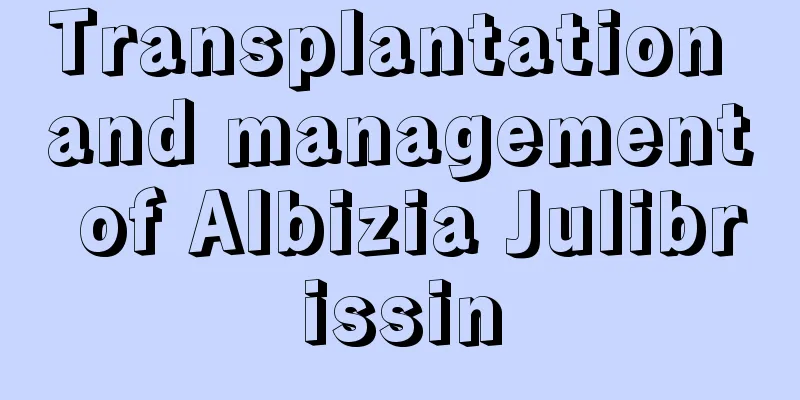Transplantation and management of Albizia Julibrissin

Time to transplant Albizia julibrissinThe best time for transplanting is spring and autumn. Transplanting in spring should be done before budding and when the sap has not yet flowed; planting in autumn should be done after the Albizia Julibrissin leaves fall and before the soil freezes. How to transplant Albizia JulibrissinTransplanting of seedlings should be done before germination, and transplanting of large seedlings should be carried out with enough soil balls. Be careful and meticulous when transplanting, protect the root system, and set up supports for large seedlings to prevent them from being blown down by the wind or growing crookedly. Choose a place with open terrain, good drainage and plenty of sunlight for transplanting. Dig a hole with a diameter of 80 cm and a depth of 80 cm, then put the seedlings in. First straighten it up to allow the roots to stretch, and then fill it with soil. It is best to transplant in the evening, and then you can apply a thin layer of organic fertilizer in combination with watering, or spray the leaves with a mixture of 0.2%-0.3% urea and potassium dihydrogen phosphate. If the soil quality is not good, you can replace the substrate, apply base fertilizer into the hole, and mix it evenly with the soil. Management of Albizia Julibrissin after transplantingAlbizia Julibrissin prefers a slightly moist and dry soil environment. After transplanting, pay attention to watering to keep the soil moist. Water again as appropriate after 3-5 days. After ensuring that the Albizia Julibrissin seedlings are growing stably, gradually reduce the amount of watering, but still pay attention to replenishing water during the dry season. In addition to the 5,000 grams of manure applied into the cave when planting, Albizia Julibrissin is generally fertilized twice a year, once as topdressing after flowering to supplement nutrients, and once in late autumn to apply basal fertilizer to facilitate root growth. Apart from this, almost no other fertilizer is needed. The trunk of the Albizia Julibrissin seedlings is often tilted and not straight because the branches are too low. In order to improve the ornamental value, it is best to prune the side branches in time. For weak one-year-old seedlings or Albizia Julibrissin with tilted trunks, you can leave one strong bud and cut off the rest before sprouting in early spring of the following year. Remove thin and weak branches and diseased and insect-infested branches in late winter every year, and properly prune the side branches to ensure the beautiful shape of the tree. |
<<: How to sow Albizia Julibrissin
Recommend
What are the varieties of American mint?
Garden Red American Mint A true garden red, this ...
What to do if the money tree has root rot? How to save it
1. Remove from the basin When the roots of the mo...
Maintenance methods and precautions of sea daffodils
1. Soil It has strong adaptability and can grow n...
What kind of soil is best for planting cacti (what kind of soil is best for potted cacti)
Cactus has a strong adaptability and can be used ...
How to distinguish between creeper and ivy
Morphological differences This is the most intuit...
How to repot and prune the roots of roses
Steps for repotting and root pruning of roses Rem...
Methods of grape pruning in summer
Grapevine pruning is essential to improving grape...
Should I pinch the new leaves of Christmas cactus?
1. Should I pinch? Whether to pinch off the new l...
How to care for Sedum succulentum
Growth conditions of Sedum succulent When caring ...
Does Hawaiian bamboo prefer shade or sun?
Does Hawaiian bamboo prefer shade or sun? Hawaiia...
Cultivation methods and maintenance of old purslane piles
How to grow purslane into an old pile When Pursla...
When is the best time to plant onions (how to plant onions for high yield)
Onion is a perennial herb of the genus Allium and...
How long is the growth cycle of lettuce?
Introduction to the growth of rapeseed Lettuce ha...
Cultivation methods and precautions of red frangipani
1. Maintenance methods 1. Temperature: Since the ...
When is the best time to plant forsythia seeds?
Forsythia seed planting time Forsythia is a peren...









